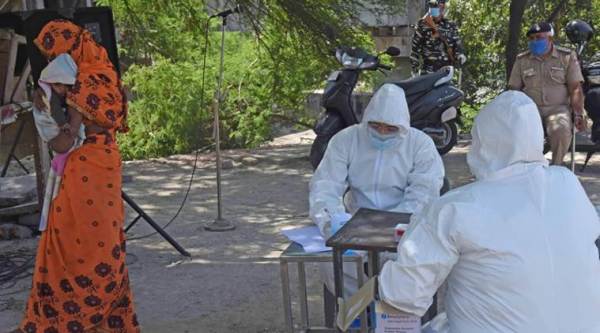 “Several studies and data from Italy, Spain and USA have revealed, at least 20 per cent of Covid-19 cases have skin manifestations”, said Dr. Vikas Sharma. (Express Photo: Kamleshwar Singh)
“Several studies and data from Italy, Spain and USA have revealed, at least 20 per cent of Covid-19 cases have skin manifestations”, said Dr. Vikas Sharma. (Express Photo: Kamleshwar Singh)
PGI Doctors cautioned people to look for changes in their skin which may be symptoms of Covid-19. Dr Priyansh Gupta, from the Department of Dermatology, PGIMER said that any kind of redness, blisters, wheels that persist for a long period should be shown to a doctor immediately as they can be signs of Covid-19 that they need to be alert about.
“Development of Chillblains (redness and swelling) on fingertips or toes lasting for more than 12 days, newly formed blisters lasting for more than ten days, wheals with itching for more than six days without any other past disease, a bluish discoloration as well as necrosis of skin have to be immediately told to a doctor. Development of these symptoms doesn’t necessarily mean you are infected with coronavirus, but one should not hesitate to consult a dermatologist if they develop these symptoms,” he said.
“Several studies and data from Italy, Spain and USA have revealed, at least 20 per cent of Covid-19 cases have skin manifestations. In some, skin manifestations appear late, while in some it precedes the classical symptoms of infection,” said Dr Vikas Sharma, MD PGI, who is also the chief consultant dermatologist at National Skin Hospital, Panchkula.
Sharma explained the cutaneous signs of Covid-19 includes rashes, erythematous exanthem (including a lacy pattern), a dengue-like rash, and chickenpox-like blisters. ‘Covid toes’ or black crusted lesions on the tips of fingers and toes, which are described as like pernio/chilblains or frostbite, are also signs. “Covid toes seem to be more common in young patients, children and adolescents in particular, and portend a mild course, or develop after asymptomatic infection,” he said.
“Vesicular eruptions appeared earliest, prior to other symptoms in 15 per cent of cases; these developed on trunk and extremities, were most common in middle-aged adults, and typically lasted about 10 days.”